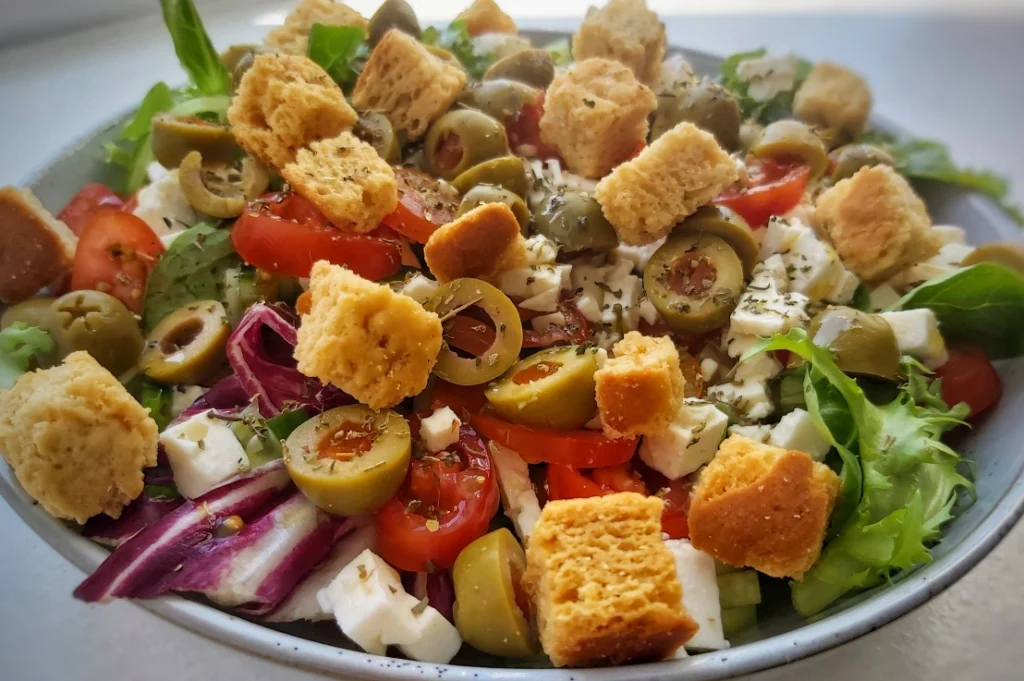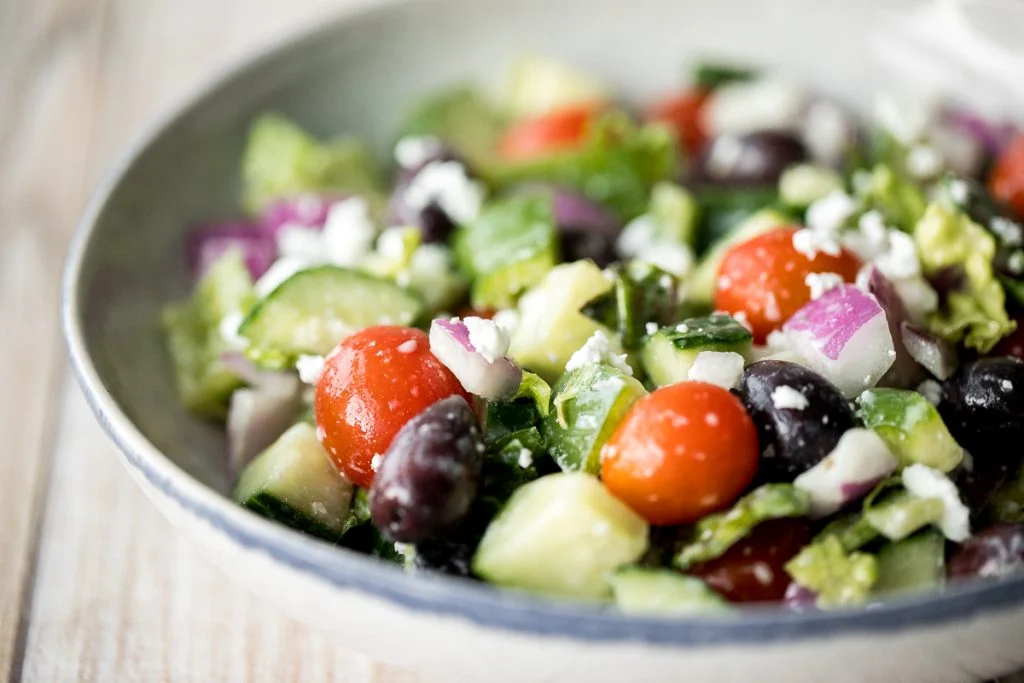The Greek salad is a dish that has captured the hearts of many around the world.
Its simplicity, yet depth of flavor, has made it a staple in many cuisines.
And at the center of this delightful dish is the union of feta and olives.
In this article, we’ll delve into the world of Greek salad, exploring the history, ingredients, and techniques that make this dish a true classic.

A Brief History of the Greek Salad
The Greek salad, also known as “Salata” in Greek, has its roots in ancient Greece.
The dish was originally made with fresh vegetables, olives, and feta cheese, which were staples in the Greek diet.
The salad gained popularity during the 20th century, when Greek immigrants brought their culinary traditions to other parts of the world.
The Essential Ingredients of a Greek Salad
So, what makes a true Greek salad? The answer lies in the quality and freshness of the ingredients.
Here are some of the essential components:
Feta Cheese: The Star of the Show
Feta cheese is the crown jewel of the Greek salad.
Made from sheep’s milk or a combination of sheep’s and goat’s milk, feta is a salty, crumbly cheese that adds a tangy flavor to the dish.
Look for high-quality feta cheese that is made from traditional methods and has a rich, creamy texture.
Olives: The Perfect Companion
Olives are another essential component of the Greek salad.
They add a salty, savory flavor to the dish and provide a satisfying crunch.
Choose olives that are pitted and have a mild flavor to ensure they don’t overpower the other ingredients.
Tomatoes: Freshness Matters
Tomatoes are a staple in many salads, and the Greek salad is no exception.
Choose fresh, ripe tomatoes that are bursting with flavor.
Look for heirloom tomatoes or cherry tomatoes for added flavor and texture.
Cucumbers: Cooling Down the Salad
Cucumbers add a refreshing coolness to the Greek salad.
They also provide a nice crunch and help to balance out the flavors. Look for thin-sliced cucumbers or cucumber pickles for added flavor.
Red Onion: A Pungent Flavor
Red onion adds a pungent flavor to the Greek salad.
Thinly slice the onion and soak it in cold water to remove some of its bitterness. This will help to balance out the flavors in the dish.
Red Bell Pepper: A Sweet and Crunchy Addition
Red bell peppers add a sweet and crunchy texture to the Greek salad.
They also provide a pop of color and help to balance out the flavors. Look for fresh, crisp bell peppers for added flavor and texture.
Dressing: A Simple Vinaigrette
The dressing is where many Greek salads go wrong.
A simple vinaigrette made with olive oil, red wine vinegar, and lemon juice is all you need to bring this dish together.
Avoid using creamy dressings or adding too much sugar, as this can overpower the other ingredients.

Techniques for Building a Classic Greek Salad
Now that we’ve covered the ingredients, let’s talk about techniques for building a classic Greek salad.
Here are some tips to keep in mind:
Build Your Salad in Layers
Building your salad in layers is key to creating a balanced dish.
Start with the base layer of lettuce or tomatoes, then add your protein (such as feta cheese or olives), followed by your vegetables and finally your dressing.
Use Fresh Ingredients
Fresh ingredients are essential in creating a great-tasting salad.
Choose ingredients that are ripe and flavorful, and avoid using wilted or old vegetables.
Don’t Overdo It
Don’t overdo it with your toppings!
A Greek salad should be simple and elegant, not overpowered with too many ingredients.
Stick to the essentials and avoid adding too many extra toppings.
Add a Crunchy Element
A crunchy element is essential in adding texture to your salad.
Try adding some crunchy elements like croutons or chopped nuts to add some depth to your dish.
Tips for Customizing Your Greek Salad
While traditional Greek salads are delicious on their own, there are many ways to customize this dish to suit your taste. Here are some tips:
Add Some Protein
Add some protein like grilled chicken, salmon, or tofu to make your salad more substantial.
Spice It Up
Add some heat to your salad by incorporating spicy elements like red pepper flakes or sliced jalapeños.
Get Creative with Toppings
Don’t be afraid to get creative with your toppings! Try adding some artichoke hearts, roasted red peppers, or crumbled bacon to add some extra flavor and texture.
Make it Vegan-Friendly
Make your Greek salad vegan-friendly by substituting feta cheese with tofu or vegan cheese alternatives.
You can also add some roasted vegetables like eggplant or zucchini for added flavor.
Conclusion
In conclusion, a traditional Greek salad is a dish that is both simple and elegant.
By combining high-quality ingredients like feta cheese and olives with fresh vegetables like tomatoes and cucumbers, you can create a delicious and satisfying salad that is perfect for any occasion.
Whether you’re looking for a light lunch or a satisfying dinner, this classic Greek salad is sure to please.

Frequently Asked Questions
Q: What type of feta cheese should I use?
A: Look for high-quality feta cheese that is made from traditional methods and has a rich, creamy texture.
Q: Can I use other types of cheese instead of feta?
A: While feta cheese is traditional in Greek salads, you can use other types of cheese like goat cheese or ricotta as alternatives.
Q: Can I add other types of protein to my Greek salad?
A: Yes! You can add grilled chicken, salmon, or tofu to make your salad more substantial.
Q: Can I customize my Greek salad with other toppings?
A: Absolutely! Try adding some artichoke hearts, roasted red peppers, or crumbled bacon to add some extra flavor and texture.
Q: Can I make my Greek salad vegan-friendly?
A: Yes! You can substitute feta cheese with tofu or vegan cheese alternatives and add some roasted vegetables like eggplant or zucchini for added flavor.
